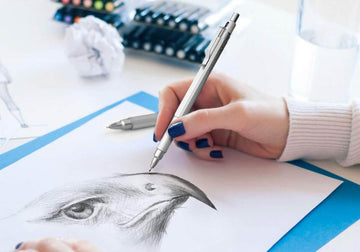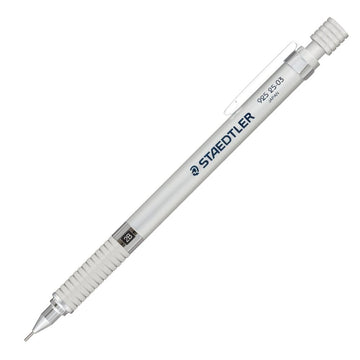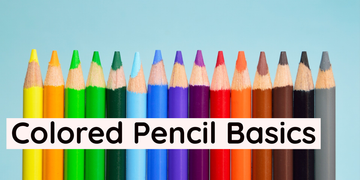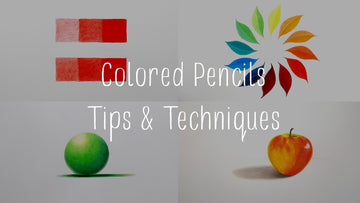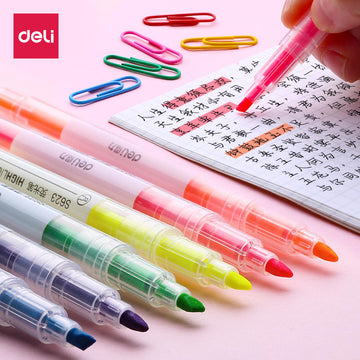
Using bright, see-through ink, highlighter pens make key words and passages stand out on the page. But with so many bold colors and tip styles available, how do you know which highlighter is best for your needs? This in-depth guide covers the history, types, uses and recommendations for effective highlighter pens.
A Brief History of Highlighter Pens
Before highlighters, readers would manually underline or shade over important text using pencils or colored chalk. The first patented highlighting marker emerged in 1962 and was dubbed the “Magic Marker” for its neon ink that glided smoothly over newsprint. In the 1970s, bright fluorescent highlighters gained popularity thanks to new ink formulas that flowed easily without soaking the paper. Major brands rapidly launched their own versions and highlighters became a classroom and office staple.
Modern highlighters use semi-transparent dyes to make the text below still readable. Water-based inks replaced harsher solvents to lower odors and environmental impact. New chisel and wedge tip shapes provide more highlighting coverage. Today, highlighters come in every color and style for efficient studying, note-taking, planning, and projects.
Types of Highlighter Tips and Their Uses
Beyond the classic fluorescent yellow, highlighters now come in a rainbow of ink colors. But the tip style makes a big difference in coverage and convenience. Here are the main types of highlighter tips:
- Chisel Tip - Often angled around 25 degrees, providing a wide highlighting swath while still being precise enough for underlining words. Best for quickly covering large sections of text.
- Wedge Tip - Similar to a chisel but with a more tapered wedge shape. The broad side highlights while the thin edge underlines. Great for mixed highlighting and detail work.
- Bullet Tip - A conical, tapered tip that covers about 2-5mm for very precise highlighting lines. Ideal for technical writing and detailed work.
- Broad Bullet Tip - A wider version of the bullet tip around 5mm-8mm. Provides visible lines that are still narrow and controlled. Good for average highlighting tasks.
- Extreme Broad Tip - Very wide wedge or chisel-shaped tips up to 1 inch across. Designed for full page coverage and colored shading. Best for larger creative projects.
- Fine Line Tip - Thin precise tips of 1-2mm for thin, detailed highlighting and writing. Leaves minimal ink for a subtle look.
Choosing the Right Highlighter Color
Beyond the standard neon yellow, highlighters now come in every color imaginable. The color you choose impacts visibility and the uses. Here are the most common highlighter color options:
- Yellow - The boldest, most visible color on white paper. Yellow grabs your attention making it ideal for key points.
- Pink and Orange - Softer but still eye-catching hues good for highlighting definitions and categories.
- Green and Blue - More subtle so useful when yellow is too bright. Works well for highlighting charts, graphs and maps.
- Purple - Nice for accentuating key ideas. Darker so doesn’t obstruct text readability.
- Aqua and Turquoise - Soothing cooler colors that calmly draw focus. Great for note-taking and revision marking.
- Neutral - Light brown, tan and gray shades let text show through for a subtle look. Nice for reviewing edited documents.
- Rainbow - Multicolor packs are fun for creative projects. Use one color per category.
Factors to Consider When Buying Highlighters
Focus on these features when selecting your highlighters:
- Ink Quality - Ensure highlighters glide smoothly and don’t skip. Quick-drying ink prevents smearing.
- Barrel - Look for strong barrels that don’t crack under pressure. Textured grips prevent slipping.
- Tip - Chisel and wedge tips suit most uses. Fine line tips add precision.
- opacity - Semitransparent ink makes text readable. Opaque ink completely blocks words.
- Non-Toxic - Avoid harsh chemicals, especially in scented options. AP certification means safer.
- Erasability - Some inks allow gently erasing mistakes. Handy for reviewing notes before a test.
- Value - Buy quality over quantity. Cheap highlighters skip and feel scratchy.
Recommended Highlighter Brands
With so many brands available, these highlighter makers deliver top performance:
- Sharpie - The most popular brand, known for vibrant liquid ink that effortlessly glides and dries quick. Fun scented options.
- Stabilo - Offers the iconic Boss line with wedge tips and radiant ink. Excellent for journaling and note-taking.
- Staedtler - Trusted German company with Noris Jumbo that have broad chisel tips ideal for textbooks.
- Zebra - Known for cad quality pens and markers. The Mildliner has soft colors perfect for delicate highlighting.
- Tombow - Japanese brand popular for arts and crafts. The Mono Twin highlighter has dual tips for variety.
- Mr. Pen - Affordable Amazon brand with every tip style. Ink flows smoothly and pages don’t bleed.
Highlighter Tips and Uses
Use these techniques to get the most out of your highlighters:
- Quickly scan texts first, then re-read highlighting key statistics, facts, and definitions on the second pass.
- Use different colors to color-code categories like dates, locations, names, etc.
- Highlight lightly for a subtle look. Avoid dark, thick lines that obstruct reading.
- Don’t highlight full paragraphs. Pull out key phrases instead.
- Use highlighters sparingly in library books. Lightly erase after or place sticky notes over text instead.
- Store highlighters horizontally in a jar or pen case to keep tips moist and ink flowing freely.
The next time you need to efficiently study text or draw attention to important ideas, reach for the perfect highlighter in a tip style and color that suits the task. Proper highlighting improves comprehension, reviews, and projects.
A Brief History of Highlighter Pens
Before highlighters, readers would manually underline or shade over important text using pencils or colored chalk. The first patented highlighting marker emerged in 1962 and was dubbed the “Magic Marker” for its neon ink that glided smoothly over newsprint. In the 1970s, bright fluorescent highlighters gained popularity thanks to new ink formulas that flowed easily without soaking the paper. Major brands rapidly launched their own versions and highlighters became a classroom and office staple.
Modern highlighters use semi-transparent dyes to make the text below still readable. Water-based inks replaced harsher solvents to lower odors and environmental impact. New chisel and wedge tip shapes provide more highlighting coverage. Today, highlighters come in every color and style for efficient studying, note-taking, planning, and projects.
Types of Highlighter Tips and Their Uses
Beyond the classic fluorescent yellow, highlighters now come in a rainbow of ink colors. But the tip style makes a big difference in coverage and convenience. Here are the main types of highlighter tips:
- Chisel Tip - Often angled around 25 degrees, providing a wide highlighting swath while still being precise enough for underlining words. Best for quickly covering large sections of text.
- Wedge Tip - Similar to a chisel but with a more tapered wedge shape. The broad side highlights while the thin edge underlines. Great for mixed highlighting and detail work.
- Bullet Tip - A conical, tapered tip that covers about 2-5mm for very precise highlighting lines. Ideal for technical writing and detailed work.
- Broad Bullet Tip - A wider version of the bullet tip around 5mm-8mm. Provides visible lines that are still narrow and controlled. Good for average highlighting tasks.
- Extreme Broad Tip - Very wide wedge or chisel-shaped tips up to 1 inch across. Designed for full page coverage and colored shading. Best for larger creative projects.
- Fine Line Tip - Thin precise tips of 1-2mm for thin, detailed highlighting and writing. Leaves minimal ink for a subtle look.
Choosing the Right Highlighter Color
Beyond the standard neon yellow, highlighters now come in every color imaginable. The color you choose impacts visibility and the uses. Here are the most common highlighter color options:
- Yellow - The boldest, most visible color on white paper. Yellow grabs your attention making it ideal for key points.
- Pink and Orange - Softer but still eye-catching hues good for highlighting definitions and categories.
- Green and Blue - More subtle so useful when yellow is too bright. Works well for highlighting charts, graphs and maps.
- Purple - Nice for accentuating key ideas. Darker so doesn’t obstruct text readability.
- Aqua and Turquoise - Soothing cooler colors that calmly draw focus. Great for note-taking and revision marking.
- Neutral - Light brown, tan and gray shades let text show through for a subtle look. Nice for reviewing edited documents.
- Rainbow - Multicolor packs are fun for creative projects. Use one color per category.
Factors to Consider When Buying Highlighters
Focus on these features when selecting your highlighters:
- Ink Quality - Ensure highlighters glide smoothly and don’t skip. Quick-drying ink prevents smearing.
- Barrel - Look for strong barrels that don’t crack under pressure. Textured grips prevent slipping.
- Tip - Chisel and wedge tips suit most uses. Fine line tips add precision.
- opacity - Semitransparent ink makes text readable. Opaque ink completely blocks words.
- Non-Toxic - Avoid harsh chemicals, especially in scented options. AP certification means safer.
- Erasability - Some inks allow gently erasing mistakes. Handy for reviewing notes before a test.
- Value - Buy quality over quantity. Cheap highlighters skip and feel scratchy.
Recommended Highlighter Brands
With so many brands available, these highlighter makers deliver top performance:
- Sharpie - The most popular brand, known for vibrant liquid ink that effortlessly glides and dries quick. Fun scented options.
- Stabilo - Offers the iconic Boss line with wedge tips and radiant ink. Excellent for journaling and note-taking.
- Staedtler - Trusted German company with Noris Jumbo that have broad chisel tips ideal for textbooks.
- Zebra - Known for cad quality pens and markers. The Mildliner has soft colors perfect for delicate highlighting.
- Tombow - Japanese brand popular for arts and crafts. The Mono Twin highlighter has dual tips for variety.
- Mr. Pen - Affordable Amazon brand with every tip style. Ink flows smoothly and pages don’t bleed.
Highlighter Tips and Uses
Use these techniques to get the most out of your highlighters:
- Quickly scan texts first, then re-read highlighting key statistics, facts, and definitions on the second pass.
- Use different colors to color-code categories like dates, locations, names, etc.
- Highlight lightly for a subtle look. Avoid dark, thick lines that obstruct reading.
- Don’t highlight full paragraphs. Pull out key phrases instead.
- Use highlighters sparingly in library books. Lightly erase after or place sticky notes over text instead.
- Store highlighters horizontally in a jar or pen case to keep tips moist and ink flowing freely.
The next time you need to efficiently study text or draw attention to important ideas, reach for the perfect highlighter in a tip style and color that suits the task. Proper highlighting improves comprehension, reviews, and projects.

